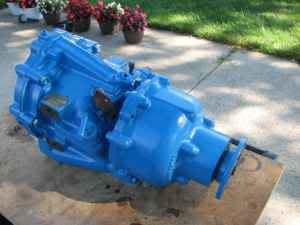ks65609
Member
- Aug 30, 2009
- 342
- Boat Info
- 1992 330 Sundancer
- Engines
- Twin 454 Mercruiser--340hp
V drive inboards
Yes, remove it! Here's how I did it. Drape the engine with a big blanket or piece of rug and climb aboard. Get the hose clamps off the intake/output which is under the engine. Don't use a screwdriver - use a socket on a screwdriver handle - 5/16"

Take note of which is which - ie: which nozzle and which hose is IN and which is OUT. The pump housing tells you by denoting for LH or RH engines. You should have LH engines. I also wrote on the housing IN and OUT in whiteout.
Remove the bracket from the alternator, as tmal explained. Remove the two bolts on the front end. There's not enough adjustment in the adjustment swing to remove the belt until this point - I would also suggest you replace the belts while you've got all this stuff off.
Go sit somewhere comfortable and mark the housing and bracket so it lines back up correctly. Pull it all apart, shove the impeller in with some dish soap - some use KY jelly - depends how kinky you are. Reassemble and assume the position in the ER. Have all your wrenches handy - once you're in there you don't want to come out.
You'll be cussing up a storm, you'll get all sorts of small cuts and abrasions, and the first one will take you 3x as long as the second one. All in all, not that bad a job.
rondds
Thankyou for the additional detailed instructions regarding the pump removal and disassembly. Also for the moral support. I already have the bandages ready as tmal suggested. I don't think cussing will be an issue either but I will have to be polite as my wife will be the one to pull me out if I get stuck.
I have a newbie dumb question : does LH/RH indicate the rotation of the engine ? I have been reading through the Merc manuals that came with the boat and quite honestly I am a bit confused as to which way each of the engines does rotate. Also thought I read on the xm serial plate the ratio was 1.6/1 however that does not agree with the manual information either. It seems to be either 1.5 or some other ratio but not 1.6 depending on the type of transmission (Borg Warner or Hurst). I thought the boat had Hurst.
I realize I am starting to jump all over the place and getting more confused as I do and wasting others time as well. I will try and get these facts straight next time I get to the boat.
Thanks
Ken






